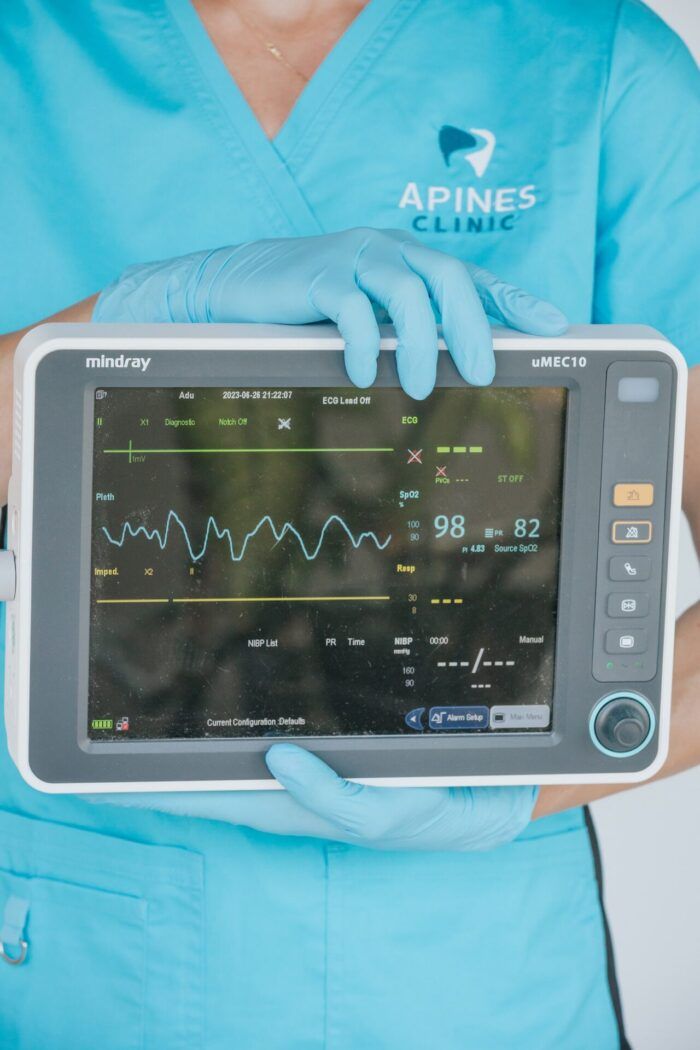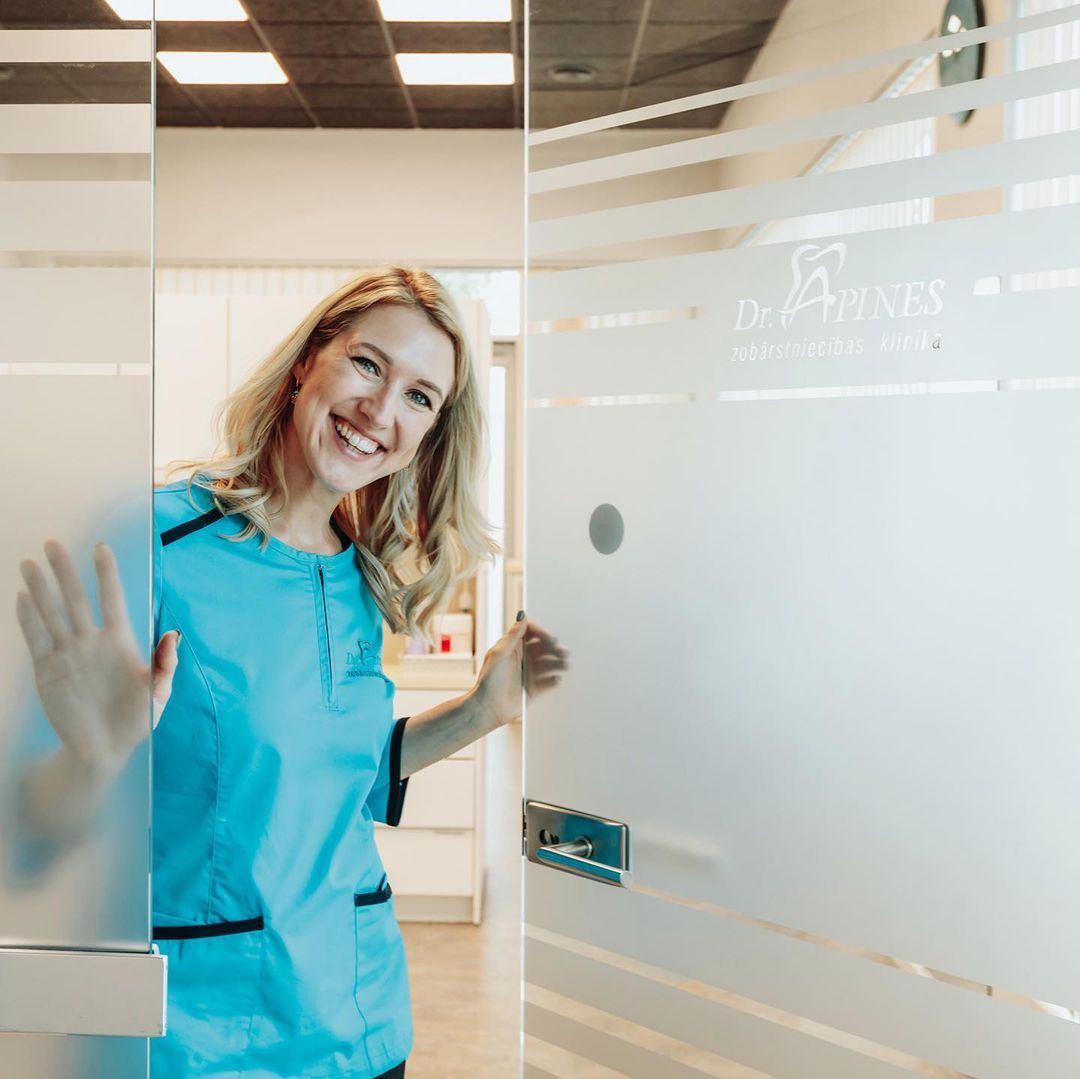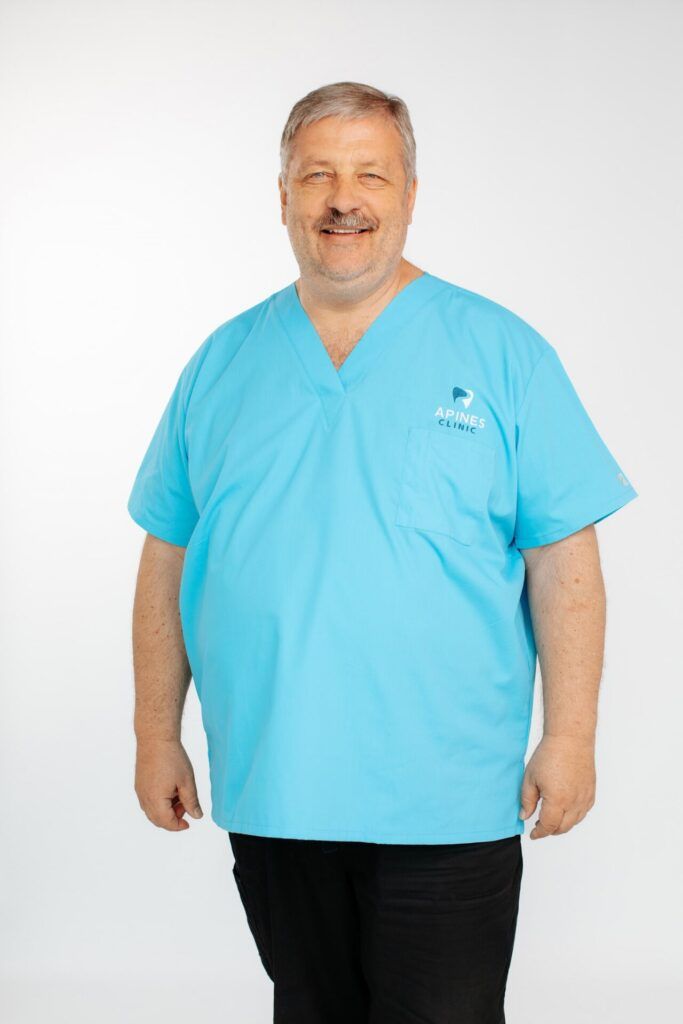
Dental treatment with general anaesthesia

Dental treatment with general anaesthesia is a recognised and often used solution for dental treatment in both children and adults. Typically used where extensive dental treatment is required or when local anaesthesia proves to be ineffective. However, it can also be used in cases when a visit to a dentist causes fear and discomfort. The purpose of the general anaesthesia is to ensure that the patient does not feel pain, fear and other unpleasant side effects.
What is dental treatment with general anaesthesia?
General anaesthesia protects from the adverse effects of pain and stress caused by the surgery to the human body, as well as facilitates the surgery itself. If you have elected to use general anaesthesia, a doctor – anaesthetist will be responsible for the anaesthesia and will monitor and support all vital processes of the body like breathing and blood circulation.
When is general anaesthesia used?
Dental treatment with general anaesthesia is used where complex dental treatment is required – oral surgery and wisdom teeth extraction, as well as when treating children with severely damaged teeth and patients who experience panic and fear from dentists.
How to prepare for dental treatment with general anaesthesia?
Before dental treatment with general anaesthesia:
- do not eat for 8 hours;
- do not drink for 4 hours.
What happens after dental treatment with general anaesthesia?
- When the dental treatment with general anaesthesia is complete, the patient remains asleep for a while.
- At least 15 minutes after waking up, the patient will rest in a separate room and then, depending on how the patient is feeling, they can go home.
- Immediately after undergoing general anaesthesia the patient is not allowed to drive, operate machinery and it is also recommended not to plan any work where important decisions must be made.
Benefits of dental treatment with general anaesthesia:
- The patient does not feel any discomfort or pain.
- The patient is unconscious – there is no moving around. The doctor can freely work without any distractions.
- All damaged teeth can be treated!
How does dental treatment with general anaesthesia work?
Consultation
To agree on the use of general anaesthesia in dental treatment, you will first have to have an individual consultation with the dentist and the anaesthetist, as well as receive a reference from your family doctor.
Evaluation
During the consultation, the dentist will evaluate the state of the oral cavity and the required treatment, as well as discuss whether dental treatment with general anaesthesia is really necessary in the particular case.
Preparation
The anaesthetist will assess the general health of the patient, evaluate the potential risks and inform you about the right preparation for dental treatment with general anaesthesia.
Potential risks
The potential risks are minimal and are mostly associated with the failure to comply with specific pre-treatment measures.
Specialists
After filling out the form, we will contact you within 1 working day and specify the appointment time.
We will contact you within 1 working day.










